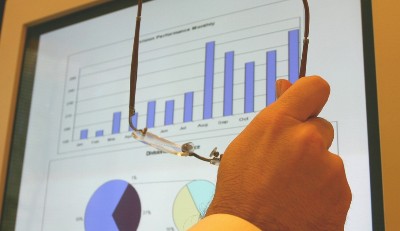Why utilization savings are still illusive for most healthcare organizations
Although the term utilization management seems to be understood by some supply chain managers and value analysis practitioners, in reality, there are still too many myths, misunderstandings, and mistakes about this new and emerging disciple. They are holding back massive new and better savings for our nation’s hospitals, systems, and IDNs. We need to clearly understand this new savings source if we as an industry are going to survive the winds of change in our healthcare marketplace.
Utilization Myths
A myth is a half-truth, sometimes called fiction, about a person or a thing that has gained acceptance over the years as being true. Supply utilization has taken on this mantel in some supply chain circles for the following three reasons:
1. It is believed that supply utilization is a term that can apply to just about any savings that isn’t price savings.
To the contrary, supply utilization management is about uncovering specific misuse, misapplication, and value mismatches in your supply streams that requires a new vigilance on how your customers are employing the commodities you are buying for them.
2. Supply utilization isn’t something new, since supply chain managers and value analysis practitioners have always looked for waste and inefficiencies in the products, services, and technologies we have been buying.
If this statement was true, why aren’t there more savings identified as utilization savings in this category? Over the last few decades, we have reviewed hundreds of savings reports and can tell you that only a handful have reported utilization savings. The truth is: As an industry, we are not focusing on this savings category as of yet!
3. There are very little savings opportunities to be uncovered in this supply chain expense operational area.
Since very few healthcare organizations are actually measuring the savings opportunities of their product, service, and technology utilization, there is no way they can state that there “are very little savings” in this category. However, we know from our own utilization savings measurement over the last two decades, that there is 7% to 15% to be saved at any healthcare organization in the country.
Myths die a slow death but eventually expire when the irrefutable facts are laid out for all to see. If you believe any of the myths about supply utilization management we have just debunked, please look at the cold hard facts that refute these claims. It is to your advantage to do so!
Utilization Misunderstandings
Beyond myths, there are other erroneous misunderstandings about supply utilization management that need to be clarified and dispelled as follows:
- Misunderstanding #1: Supply utilization management is someone else’s job. Supply chain management’s job is to manage and control all products, services, and technologies from “acquisition to disposition”. When you buy into this definition of supply chain management you can easily see that utilization management falls under the realm of supply chain management. This is because supply chain management is the only hospital department that has (or should) have unlimited visibility over its hospital’s supply chain expenses. No other hospital department has this visibility!
- Misunderstanding #2: Value analysis teams are focused on utilization management. It has been our observation, from working with hundreds of hospitals, systems, and IDNs over the last three decades, that value analysis teams’ whole focus is new product requests and/or GPO contracts. They aren’t looking at the utilization of the products, services, or technologies their hospital, system, or IDN is buying. Due to this fact, millions of dollars are lost each year at facilities that are ignoring this new and better savings source.
- Misunderstanding #3: Spend managers can identify my utilization misalignments. Spend managers were developed to benchmark your prices to uncover your competitive gaps, not your hospital’s supply utilization misalignments. Therefore, this one tool is useless in managing and controlling utilization of your products, services, and technologies. That’s why you need more than one power tool, like a master carpenter, to get the job done right – the first time!
All new disciplines, like supply utilization management, are misunderstood at first until more accurate information is provided to the marketplace to clarify and dispel misinformation that has arisen over time. Don’t get caught up in this cycle of misinformation; get the facts from credible sources to keep your supply utilization management program on track and on target.
Utilization Mistakes
When contemplating your own supply utilization management program, it makes sense to avoid the three biggest mistakes supply chain managers and value analysis practitioners make in establishing their programs:
1. Not utilizing technology to ferret out supply utilization savings.
We have found that you can’t uncover your supply utilization misalignments with the naked eye. It requires specialized technology built to classify, identify, and root out the cause of waste and inefficiencies in your supply streams. Spreadsheets won’t help since they are a static tool too labor intensive and cumbersome to be helpful in your search for new and better savings.
2. Not shadowing your customers to understand why your hospital practices are different.
Too often, hospitals will identify a supply utilization savings but not know why it is happening. This is when you need to visit the customers that are using the commodity and then observe how they are employing the product, service, or technology.Without fail, this exercise will lead to answers to your questions about utilization misalignments. Sitting at your desk or discussing this anomaly at a value analysis team meeting won’t get you the answers you need to solve this problem. You need to be proactive in doing so!
3. Not using data (charts, graphs, and benchmarks) to convince your customers to change their costly behaviors.
When you do identify, verify, and observe a supply utilization misalignment, you then need to convince your customers and stakeholders of the need to change their costly behavior. This is most successfully accomplished by using charts, graphs, and benchmarks to show your customers that they’re an outlier. Since no department head or manager likes to be considered an outlier, they will quickly conform their behavior to that of their peers. This tactic works 98% of the time!
We all make mistakes, slipups, and gaffes in our supply chain business, but why not learn from the mistakes of others, as we have outlined herein, to shorten your learning curve. It’s the fastest way we know of to become an expert in supply utilization management without the slow painful process of trial and error.
Illusive Savings
As your price savings dissipate over the next few years, you will need to pick up the slack with new and even better savings to fill in your savings gaps. There is no better way to do so than with supply utilization management. First, you need to clear away the myths, misunderstandings, and mistakes that are holding back your supply utilization savings. We hope this article goes a long way in helping you on this journey to utilization management success.





